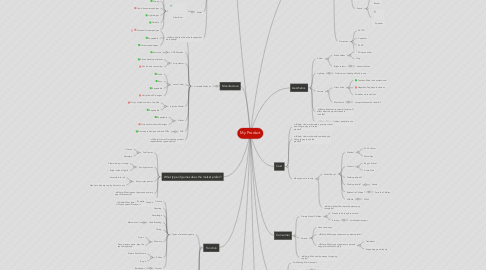
1. What type of games does the market prefer?
1.1. Fair Games
1.1.1. Chance
1.1.2. Nostalgia
1.2. Exciting Games
1.2.1. Clear winning or losing
1.2.2. Bright colours/lights?
1.3. Easy to play games
1.3.1. Accessible for all
1.3.2. Needs to be easy to play but not to win
1.4. What types of games do primary age children enjoy?
1.5. What type of game will they be willing to spend money on?
2. Safety
2.1. Used by younger children
2.1.1. No Sharp edges
2.1.2. No exposed electronics
2.2. How can I make it safe for all ages?
3. Function
3.1. Types of electronic game
3.1.1. Chance
3.1.1.1. Roulette
3.1.2. Guessing
3.1.3. Knowledge
3.1.4. Code Breaking
3.1.4.1. Mastermind
3.1.5. Timing
3.1.6. Memory
3.1.6.1. Simon
3.1.6.2. Piano memory game, play the key that lights up
3.1.7. Reflex
3.1.7.1. Electric Shock Game
3.1.7.2. Bop It
3.1.8. Tactical
3.1.8.1. Battleships
3.2. How reliable will the product need to be?
3.2.1. 80-100%?
3.3. How will it collect money?
3.4. How will it represent traditional British values?
4. Manufacture
4.1. Available Methods
4.1.1. Vacuum Forming
4.1.1.1. Only works with polystyrene
4.1.1.2. Repeatable
4.1.1.3. Gives sloped edges
4.1.2. CNC Machine
4.1.2.1. Accurate
4.1.3. Strip Heater
4.1.3.1. Allows bending of plastic
4.1.3.2. Can be time consuming
4.1.4. Laser Cutter
4.1.4.1. Quick
4.1.4.2. Easy
4.1.4.3. Repeatable
4.1.4.4. Only allows 2D designs
4.1.5. Injection Mould
4.1.5.1. Only a limited number of moulds
4.1.5.2. Repeatable
4.1.6. Sticker
4.1.6.1. Repeatable
4.1.6.2. Only works with small designs
4.1.7. PCB
4.1.7.1. Best way to design and make PCBs
4.1.8. How will I make the product repeatable but good quality?
5. Materials
5.1. Available Materials
5.1.1. Plastic
5.1.1.1. Acrylic
5.1.1.1.1. Strong
5.1.1.1.2. Bendable
5.1.1.1.3. Can Snap
5.1.1.1.4. Range of colours
5.1.1.2. Polystyrene
5.1.1.2.1. Very easy to bend or mould
5.1.1.2.2. Range of colours
5.1.1.2.3. Snaps even more easily than Acrylic
5.1.2. Wood/Cardboard
5.1.2.1. Cardboard
5.1.2.1.1. Easy to use
5.1.2.1.2. Cheap
5.1.2.1.3. Less long lasting
5.1.2.1.4. Less professional
5.1.2.2. Plywood
5.1.2.2.1. Cheap
5.1.2.2.2. Potential for rot
5.1.2.2.3. Traditional look
5.1.2.2.4. Splinters
5.1.2.2.5. Hard to Shape and colour
5.1.3. Metal
5.1.3.1. Aluminium
5.1.3.1.1. Riveting
5.1.3.1.2. Strong
5.1.3.1.3. Could have messy edges
5.1.3.1.4. Light weight
5.1.3.1.5. Durable
5.1.3.1.6. Potential for sharp edges
5.1.4. Which will be the cheapest but best quality?
6. Aesthetics
6.1. Colour
6.1.1. British Values
6.1.1.1. Tradition
6.1.1.2. Flag
6.1.2. Bright colours
6.1.2.1. Attract children
6.2. Lighting
6.2.1. Outdoors so lighting difficult to see
6.3. Texture
6.3.1. Gloss finish
6.3.1.1. Positives-Shine, look professional
6.3.1.2. Negatives-Fingerprints obvious
6.3.1.3. Scratches more obvious
6.3.2. Matt Finish
6.3.2.1. Less professional but hardier?
6.4. What environmental factors will effect what the product needs to look like?
6.5. What will attract people to use the product?
7. Cost
7.1. How much would a primary school be willing to pay to hire the product?
7.2. How much would somebody be willing to pay to use the product?
7.3. Money goes to charity
7.3.1. What Charity?
7.3.1.1. Medical
7.3.1.1.1. Sail 4 Cancer
7.3.1.1.2. Macmillan
7.3.1.2. Schools
7.3.1.2.1. Bags 2 School
7.3.1.2.2. Active Kids
7.3.1.3. Working abroad?
7.3.1.4. Working locally?
7.3.1.4.1. Anode
7.3.1.5. Related to Children?
7.3.1.5.1. Save the Children
7.3.1.6. Wildlife
7.3.1.6.1. WWF
7.3.2. What Charities will parents pay to support?
8. Consumer
8.1. Primary School Children
8.1.1. Needs to be tough to survive!
8.1.2. Exciting
8.1.2.1. Small attention span
8.2. Parents
8.2.1. Have the money
8.2.2. What type of games do parents prefer?
8.2.3. What type of games are parents happy for children to play?
8.2.3.1. Traditional
8.2.3.2. Supporting good charity
8.3. Who has the money for paying to play?
9. Environment
9.1. Disposable?
9.2. What will the best way be to make my product more environmentally friendly?
9.2.1. Biodegradable?
9.2.1.1. Cardboard/Wood?
9.2.1.2. Electronics not Biodegradable
9.2.2. Strong, will not have to be replaced?
9.2.3. Recyclable?
9.2.3.1. Plastics?
9.3. Use
9.3.1. Outdoors
9.3.1.1. Waterproof
9.3.1.2. Will not fade in the sun?
9.3.1.3. If sounds, loud enough to be heard in open area
9.3.1.4. Bright colours, attract attention
9.3.2. Where is a summer fair likely to take place?
9.3.3. Which materials would be better for outdoor use?
10. Size
10.1. Small enough for transport
10.2. Table mounted?
10.2.1. Feet to protect
10.3. Hand held?
10.3.1. Wipe down surface-clean off fingerprints
10.4. Sturdy enough to stay in position during use
10.5. What will be the best size for use at a fair?
11. Electronics
11.1. Inputs
11.1.1. Switches
11.1.1.1. PTM
11.1.1.2. Toggle Switch
11.1.1.3. PTB
11.1.1.4. LED Switch
11.2. Outputs
11.2.1. Light
11.2.1.1. LED
11.2.1.2. 7 Segment Display
11.2.2. Sound
11.2.2.1. Buzzer
11.2.2.2. Speaker
11.3. Processes
11.3.1. 4017IC
11.3.2. Capacitor
11.3.3. 555IC
11.3.4. Microcontroller
